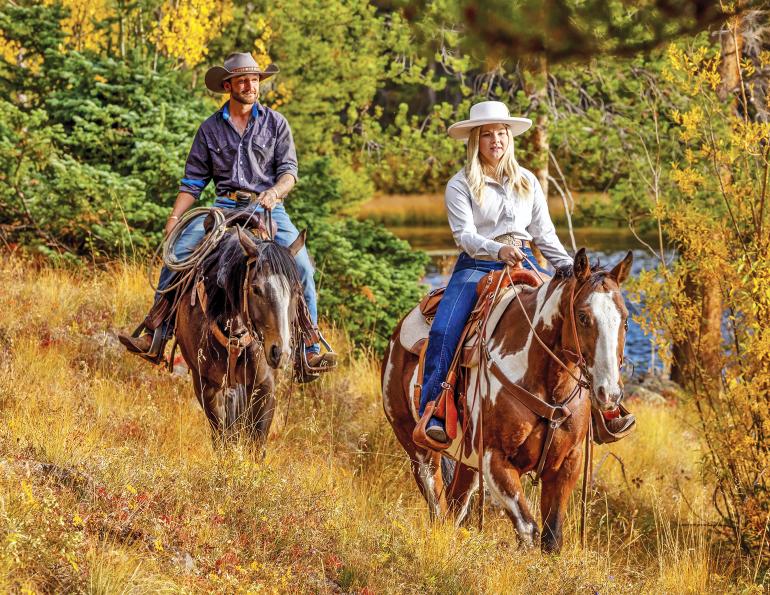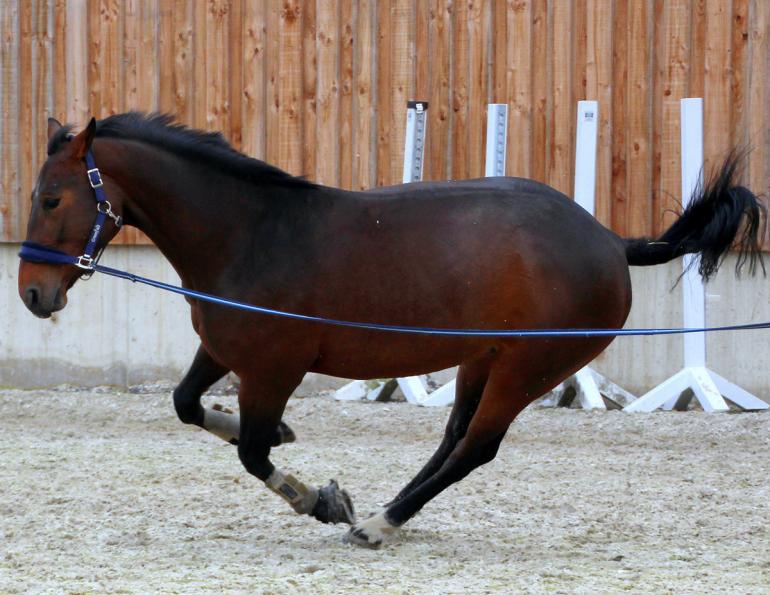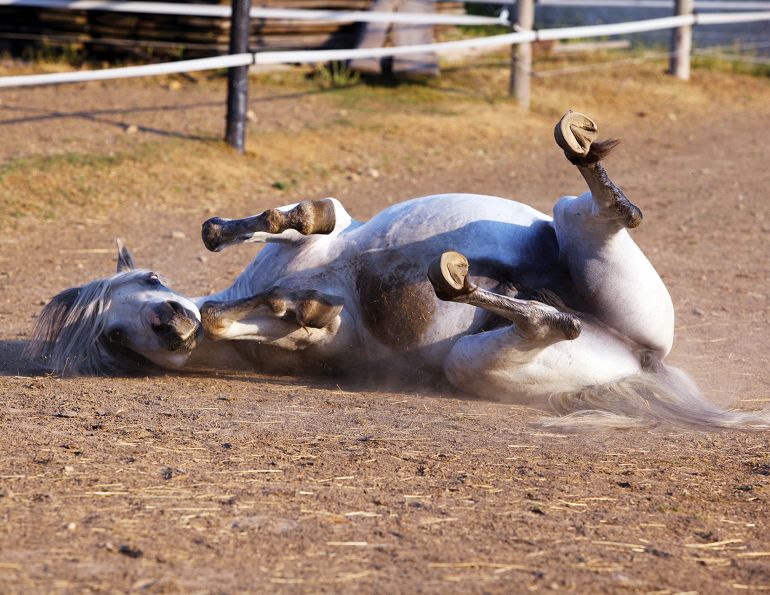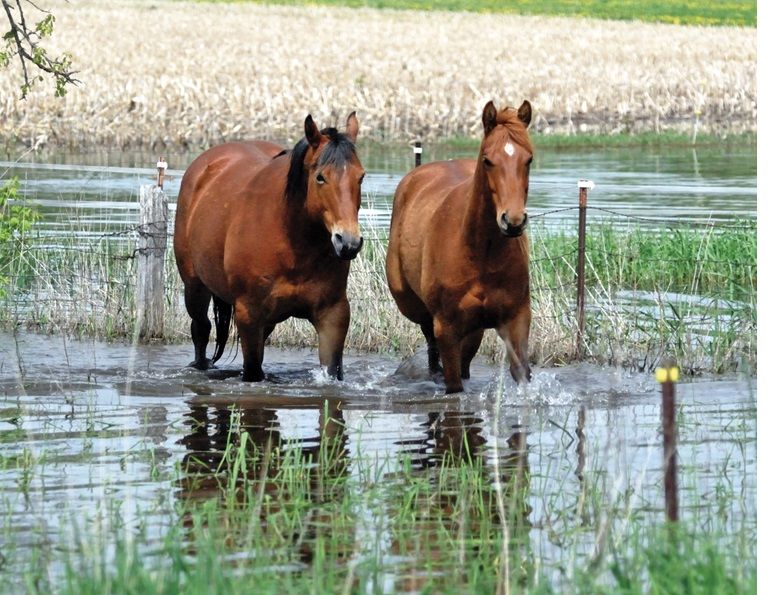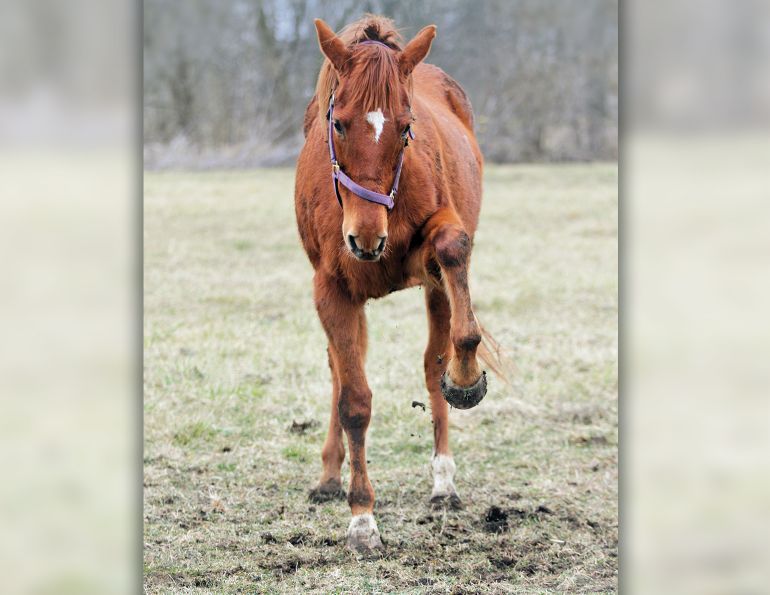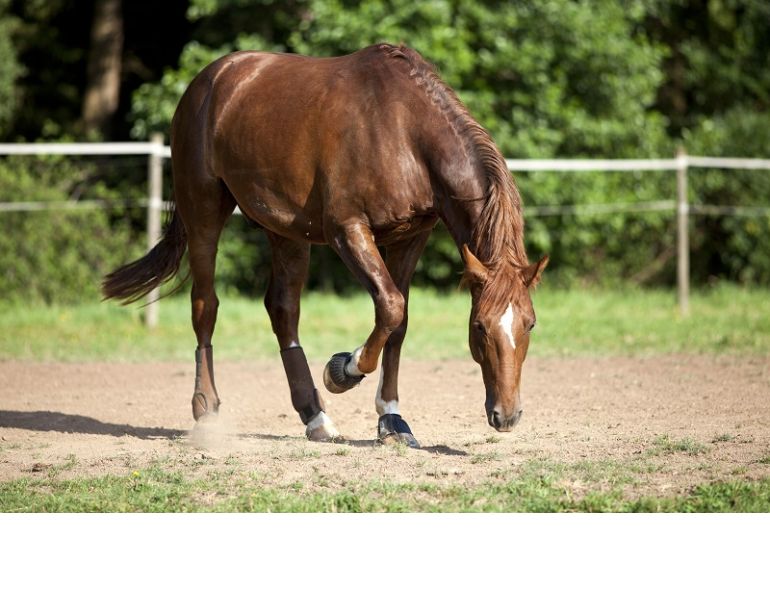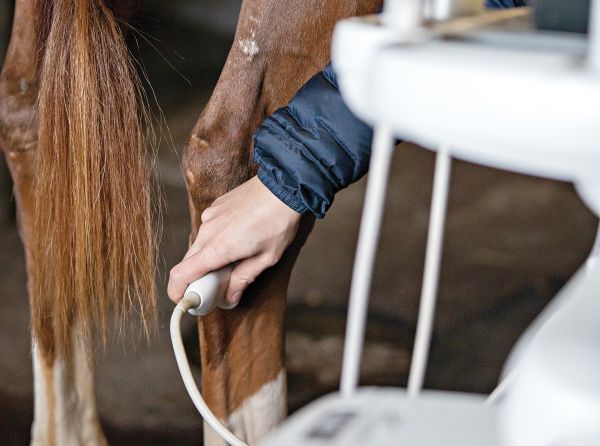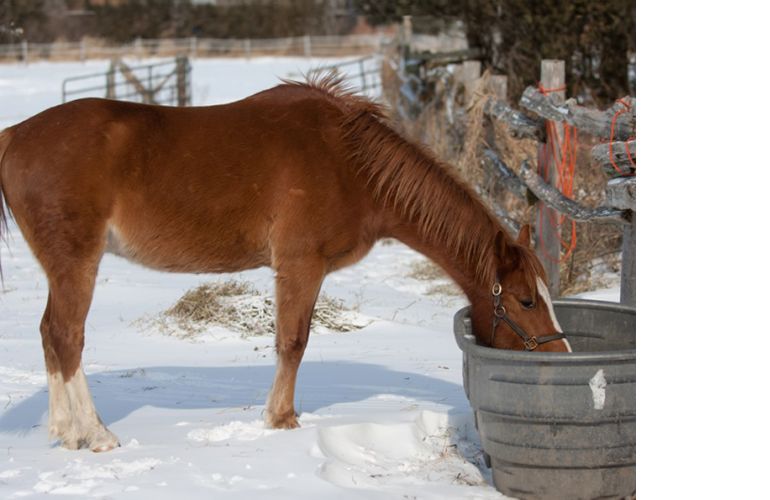By Monique Noble
Jump to How to Remove a Tick from a Horse
Not much can gross out a horse person. We happily pick out hoofs, observe the quality of manure, scrape bot eggs off our horses’ legs, and get a weird sense of satisfaction from an expressed abscess. But ticks… ticks are just nasty.

Don’t let a fear of ticks prevent you and your friends from enjoying the great outdoors. Prevention and preparation are your best tools when it comes to ticks. Photo courtesy of Starizon Images
Ticks have been found in almost every region of Canada and are becoming more prevalent. There are many theories as to why. Migratory birds and animals transport ticks from one area to another, and shorter, less intense winters resulting from climate change contribute to their survival rate. Thank goodness ticks can’t fly! The fact remains that ticks are here and expanding their range in Canada — what can we do?
Often referred to as an insect, ticks are a member of the arachnid family along with spiders, mites, and scorpions. Ticks have four pairs of legs, and no antennae. There are many different types of ticks in Canada but the ones we see most frequently are dog ticks, lone star ticks, and deer ticks (also known as black-legged ticks, of which there are two types: the black-legged tick and the Western black-legged tick.). It is the black-legged tick that can carry Lyme disease, anaplasmosis, and, more frequently seen though previously rare in Canada, babiosis.

Ticks are found in many areas across Canada, but they prefer wooded areas, tall grasses, and under leaf litter. In urban areas they are found in parks and green spaces. Photos: AdobeStock (top left); Shutterstock/Jay Ondreicka (top right)
We want to control exposure to ticks but preventing tick bites and practicing good horse stewardship can seem at cross-purposes. Long tall grass is a beautiful sight to both horse and horse owner, but it’s a favourite hangout for ticks. Chickens and guinea fowl are fantastic for tick control but not everyone has the desire or ability to keep chickens. Removal of tick habitat and natural pest control are not always options. The best course of action for our equine partners is thorough grooming and monitoring daily, and the application of topical repellents.
Related: How to Get Ticked Off! - Horses and Ticks
Repellents are the first line of defence for your horse and there are many on the market, including mainstays such as Tick Off and Ultrashield®. But don’t waste your products by spraying the horse’s whole body, concentrate on the legs and underbelly, throatlatch, mane, and tailhead, which are favourite tick hangouts. Try to get product into the leg pits and especially along the backs of legs and behind the fetlock. Don’t apply to the forelock because the product can be carried into the eyes by rain or sweat. Apply tick repellent on the horse’s head by spraying it on a cloth and wiping the cloth around the horse’s muzzle and in and around its ears.
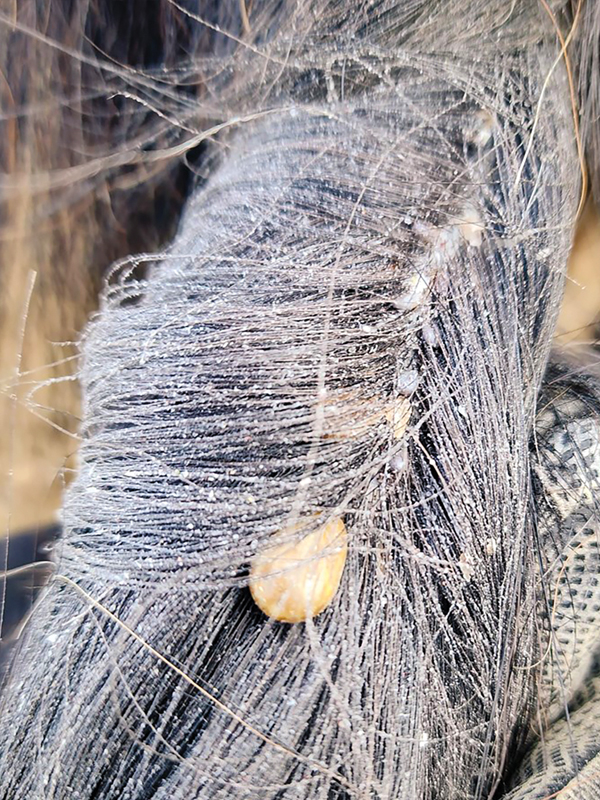
Manes are a common place to find ticks. Less common but important to check are the ears and nasal passages as the thin skin of these areas makes for easy feeding grounds. Photo courtesy of Horse Heroes Alberta
Instructions for home remedies can be found online but unless your horse has chemical sensitivities, stick to products that contain DEET or permethrin. Essential oils such as neem oil can prevent ticks but need to be reapplied every two hours. Diatomaceous earth is used by some people as a dusting treatment but can cause respiratory problems in horses and is not recommended. Tick and flea treatments used on horses and dogs should never be used on cats, as they are potentially toxic to our feline friends.
Related: What's Biting Your Horse?
Even the most diligent prevention methods can be thwarted as ticks are not only opportunistic, they are sticky and adept at hiding. Ticks have tiny hooks at the end of their legs, enabling them to hang on to their host even after a swim, shower, or bath. Common places to find ticks on horses are on the fetlocks, legs, belly, throatlatch, chest, mane, tail, inner legs, and pubic areas.
While grooming your horse it is important to check any unusual bumps as these can indeed be ticks. Ticks don’t always look large and engorged; they only look like that after they have had a blood meal. If you find them before they have started their blood meal they will be flat and easier to remove; at this stage, pick the tick off and dispose of it by either dropping it into a container of rubbing alcohol or sealing it inside a piece of tape or a sealable container.
If you find a tick in its engorged state or at the beginning of its meal, its head will be embedded in its host’s flesh; at this point removal must be done more carefully as squishing it or waiting for it to detach itself is more likely to cause the tick to pass on any diseases it may be carrying. All ticks can transmit diseases, and in some cases multiple diseases in one bite. They can carry and transmit zoonotic diseases such as babesiosis, equine piroplasmosis, ehrlichiosis, anaplasmosis, tularemia, Lyme disease, tick paralysis, and more.
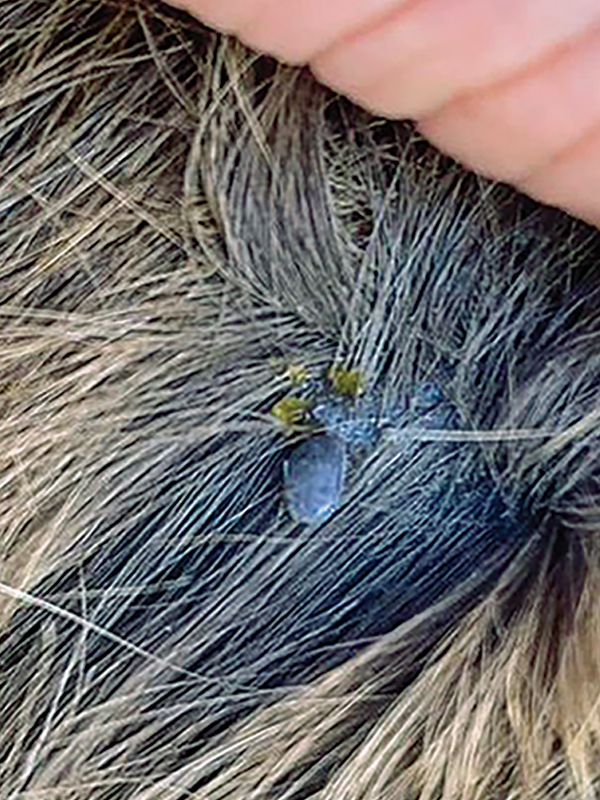
Ticks in a horse’s hair coat when not engorged can feel like a small bump. Investigate any bumps encountered while grooming as they could be a troublesome guest. Photo courtesy of Tick Awareness Canada
Related: Eastern and Western Equine Encephalitis
HOW TO REMOVE A TICK FROM A HORSE
The recommended method of tick removal is as follows:
1. Wear gloves if possible.
2. Use clean, fine-tipped tweezers to grasp the tick as close to the skin’s surface as possible. If using a tick removal tool such as a key, card, or twist, secure the tool in between the tick’s head and body.
3. Pull upward with steady, even pressure. Don’t twist or jerk the tick; this can cause the mouthparts to break off and remain in the skin. If this happens, remove the mouthparts with tweezers. If you cannot remove the mouth easily with tweezers, leave it alone and let the skin heal.
4. After removing the tick, thoroughly clean the bite area and your hands with rubbing alcohol or soap and water.
5. You may want to preserve the tick for identification or testing purposes. To do this seal the tick inside a clear container or tape to a piece of paper leg-side down using clear tape.
6. Never crush a tick with your fingers. Dispose of the tick by putting in the trash after…
- Putting it in alcohol.
- Placing it in a sealed bag/container.
- Wrapping it tightly in tape.
- Feel free to do all three.
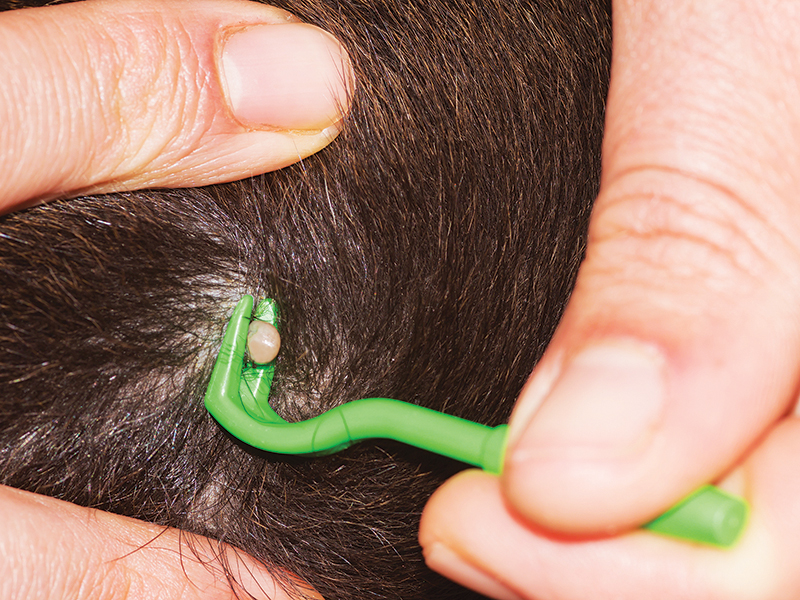
Using a tick puller to remove an engorged tick. Thoroughly clean the bite area and your hands with hot soapy water after removing a tick. Photo: iStock/Sasel77
Related: Flies Affecting Horses: Buzzing and Biting
If you have a horse with an infestation of ticks, it is important to get a veterinarian’s advice. They will most likely treat your animal with Cyclence and suggest a deworming protocol. The vet may want to send some of the ticks away for testing and do a blood panel on your horse to test it for a variety of diseases and anemia, which are all possible side effects of a large infestation. Cyclence will kill all the ticks that are on your horse whether they are currently feeding or not, regardless of life cycle. Ivermectin will kill ticks that are currently feeding on your horse. As a parasite can also carry parasites, Ivermectin will also kill microfilaria (baby worms) attached to the tick.
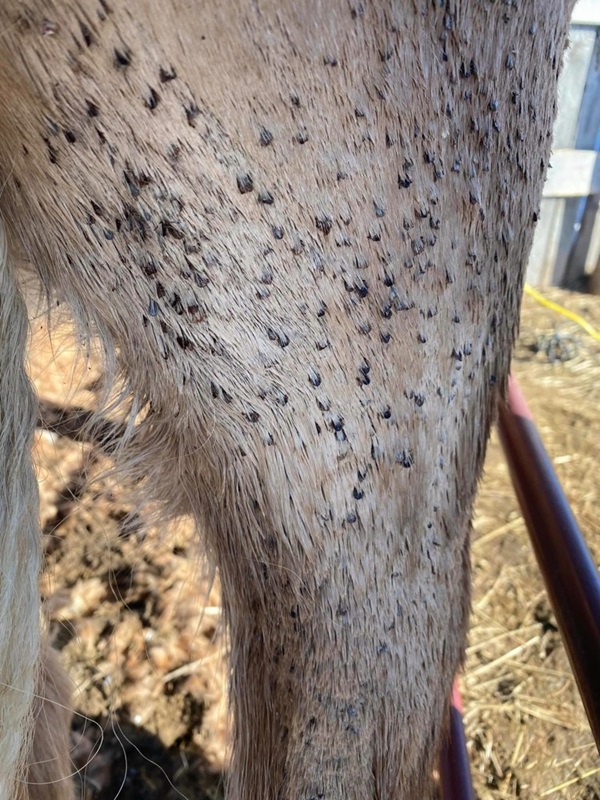
Tick infestations when not controlled can cause all sorts of health issues for you and your livestock. Once ticks are in your area, they can be difficult to get rid of. This infestation was seen in an auction horse. This horse was successfully treated but it was a lot of hard, necessary, and disgusting work. Photo courtesy of Horse Heroes Alberta
Unfortunately, it only takes one infected tick to pass on disease. Even if your horse isn’t infested, if you do find a tick it is a good idea to Cyclence and deworm the horse in case of hidden hitchhikers and/or larvae or eggs left behind. Keep a watchful eye on the horse for four to six weeks after the incident. Watch for any signs of bacterial infections around the wound sights. If at any point after being exposed to a tick bite your horse should exhibit a rash, joint pain, fever, lethargy, shortness of breath, swollen fetlocks, lack of coordination, or unwillingness to eat, this could indicate an illness related to a tick bite and you should call your veterinarian immediately.
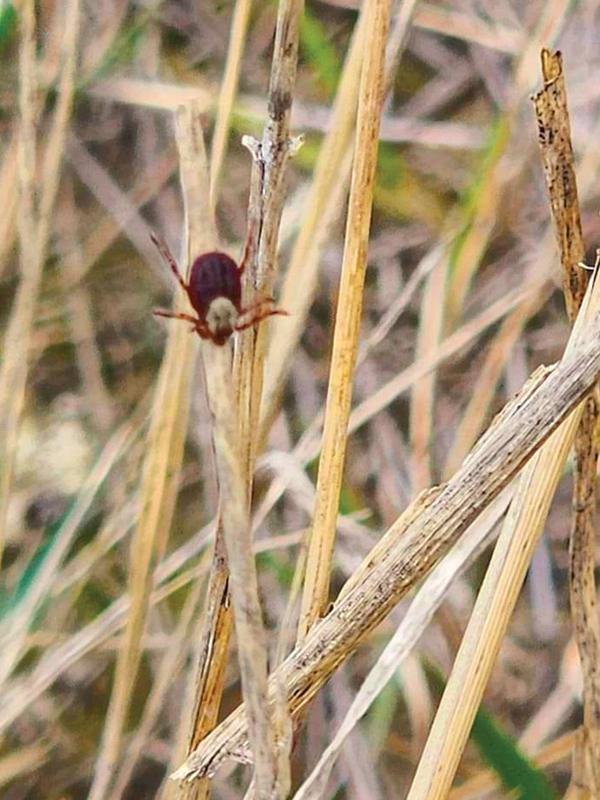
Ticks cannot jump or fly; they can only crawl. They cling to tall grass and foliage and wait for a passerby to latch onto, then they will crawl on their host until they find a likely feeding spot. Photo courtesy of Tick Awareness Canada
If you want to be proactive and don’t want to play the waiting game, a preserved tick can be sent away for testing by your veterinarian or privately to rule out any diseases. These tests can be costly but may help your peace of mind in the event you find one on yourself or any of your animals.
Related: Bugs Be Gone: Fly Control for Your Horse and Barn
Even one tick can cause a huge problem. One female tick can lay 4,000 to 6,500 eggs, after which she dies. The eggs hatch in about 36 to 57 days. The larvae crawl in search of a host and can live up to 540 days without food. Once ticks are established on your property, they can be extremely hard to get rid of.
In addition to animals, remember to check yourself thoroughly for ticks as people are often unaware carriers. It is also advisable to carefully examine any clothing you were wearing while removing ticks and wash it in hot water immediately (ticks can survive a cold or warm water wash) to make sure there is no opportunity for them to spread.
The best defence is a good offence, and as ticks expand their range and become more prevalent, it’s only a matter of time before you or your horse encounter one… tick tock.
Resources:
Related: Podcast - Equine Ticks with Dr. Luis G. Arroyo
Related: How Climate Change is Affecting Our Horse Industry
Related: How Infectious Diseases Spread Among Horses
Main Photo: AdobeStock/Terri Cage



